Gerald was still at church when we set off for King's Lynn. We had liked the little we had seen and wanted to go back for a short visit. We stopped at Castle Rising to see a bit of the village and find a cache before going on to South Wooton (where Gerald and Helen used to live) to see the duck pond and (to fail) to find a cache, although we called in at the end of the day and had more success then.
King’s Lynn was originally Bishop’s Lynn until renamed by Henry 8th in 1537
. At the request of the Bishop of Norwich, King John granted the town a charter in 1204 that made it a borough and gave it a degree of self governance. This reflected its importance as the 4th biggest port in the Kingdom. Helen had told us that there is a local legend that King John’s treasure is somewhere in the Wash because he started his last journey in this area and his baggage train was lost on the way.
We stopped near St Margaret’s church, which has an interesting clock on one side that shows the state off the tide not the time. This was donated in 1683 by a local clock maker who was also a churchwarden. There was a service on so we didn’t go into the church but on one door a series of flood levels are marked. We also took photos of the old town hall, with its checkerboard front, and the old jail before going down to the quay by the river Ouse.
On the quay we saw a sign for Hanse House which is one of only 8 such buildings left in the world
. We had coffee in the 16th century former Warehouse which is now a café. Although it is now a few metres from the river, it is believed it originally protruded over the river. The café had table covers with information about the area that was given in more detail in the museum on the 1st floor. I managed to sneak out and find a nearby cache as well.
The museum also included a shop that sold both new and some second hand items as a fund raiser. John was the one who checked out the books as they had a couple about the military history of the area as well. I was interested in the Hanseatic history as it tied in with Bremen. The links had made King’s Lynn a very prosperous town in the past and the building was an old warehouse that used to protrude into the river. It mentioned other English cities that were part of it and also that a new version had been revived that included many of the original cities.
The museum also mentioned a number of the famous people from the area. These included Lord Nelson, who had been born on the coast, Pocahontas, who had married a local and Robert Falcon Scott of the Antarctic. The display also included information about the natural life of the area. There were binoculars and a viewing platform so you could see over the river.
My favourite though was a full display about Robert Scott’s son, Sir Peter Scott, who was a naturalist and artist
. Amongst other things he named the Loch Ness monster, Nessiteras rhombopteryx, which is Greek for 'the wonder of Ness with the diamond shaped fin’. It is also an anagram of ‘master hoax by Sir Peter Scott’.
We then drove across Norfolk on an A road to get to Horsey, near one of the Broads. Apart from the local link with Glen’s nickname and the College field, there was a Heritage site here, the Horsey Windpump. This had been destroyed by lightening and rebuilt in the early 1900’s to pump water out of the area. It is no longer operating, as such jobs are now done by diesel and electric pumps.
We walked along the canal to check into a cruise on this part of the Broods but the boatman said there was very little birdlife to be seen at present. It was not a hot day and a cruise just for the boat trip didn’t appeal so we didn’t bother. The more popular part of the Broads we got to later was so busy we didn’t stop to see if a trip there would have shown us more
. We also went to a viewpoint where you could see where the canal widened to a small lake with the traditional reeds at the edge. These are still used for thatching. There were a few boats around but mainly moored and a number of people fishing.
We went up to the top of the windpump (or windmill) to see the view. Each floor gave a bit about the history of the pump and the area. There is one showing it surrounded by water in an early flood. There was an area where attendants could sleep but the machinery meant they would find it noisy. The sails would rotate about 15 times per minute and the tradition was for a new attendant to do a rotation on the sails. It was a risky job as the sails moved around with the wind direction.
We had a cuppa at the Waxham Great Barn built in the 1580’s. It is called the great barn because it is 55m long – and is that size because a neighbour built one that was 48m long. Some of the beams were masts from wrecked ships in the area that would have been sold as salvage
. The displays inside were still quite limited but it did try to portray the rather harsh life for the workers in the 16th century. There were also details of the building done in the area with flint. I hadn’t realised that the rocks on house walls were natural flint. If this was split it was more expensive, and the most expensive is flint that is squared off.
We returned West on the country roads, stopping off once for a small walk to a cache. There are lots of walkways and cycleways and some people have set a series of caches on a circuit walk which would be nice to do if we were local. We made our way to the small village of Castle Acre which has a castle, a ruined priory and an old church.
We picked up the audio guides which gave us an excellent commentary on the priory. Much is in ruins, partly because of it’s age but mainly because it was ransacked after the dissolution of the monasteries by Henry 8th in 1537. There was enough remaining for us to see how magnificent the priory church would have been and there were also illustrations of how the monastery would have looked at the time
. It had 33 monks living here at its peak and they would have had 7 services a day in the church.
There is enough remaining for the guide to show us the placement of the various parts of a typical monastery including the latrine which was built so a channel would flow through and take waste away. The audio guide had comments made by a ‘monk of the day’ including comments that they all slept in their robes as the dormitory had no heating and that the monks had regular bloodletting after which they had time in the infirmary which did have heating.
We then went into the prior’s residence which was much more complete. The explanation was that the prior’s rooms were much more elaborate then the monks’ part so they became a country house for a local lord after the monastery was closed. Clearly although all monks are equal the prior is much more important. The audio had the ‘prior speaking’ and explaining that it was his duty to have a residence suitable for the important visitors he would have to entertain
. There were some small remnants of the painted walls, he had his own bathroom area, a fireplace in his bedroom and his own chapel.
We then visited the castle which was even more ruined than the priory. It had a number of illustrations of what the castle would have looked like when first built, when extra fortifications were added and later when a guest area would have been added once the wars were over. There were lots of people around the castle, enjoying the sunshine.
Because the local pub didn’t serve food on Sunday evening we went back to King’s Lynn and found a Weatherspoons pub as we had been told they had internet. They supposedly did but we could not get on, but the service was very good and the meal was fine. We were back at 9pm to have a chat with Gerard and Helen, then John went to bed while I fortunately stayed up for a coffee because, before I had finished it, we went outside to see the fireworks that were the finale of a local concert and could be seen from the front porch.
Kings and castles
Sunday, August 08, 2010
 Dersingham, England, United Kingdom
Dersingham, England, United Kingdom
Other Entries
-
65A trying day to Trier
Jul 2217 days prior Trier, Germanyphoto_camera3videocam 0comment 0
Trier, Germanyphoto_camera3videocam 0comment 0 -
66The Chartres Illuminations
Jul 2316 days prior Chartres, Francephoto_camera16videocam 0comment 0
Chartres, Francephoto_camera16videocam 0comment 0 -
67Arriving in Paris
Jul 2415 days prior Paris, Francephoto_camera6videocam 0comment 0
Paris, Francephoto_camera6videocam 0comment 0 -
68Our Tour de Paris
Jul 2514 days prior Paris, Francephoto_camera17videocam 0comment 1
Paris, Francephoto_camera17videocam 0comment 1 -
69One evening in Paris
Jul 2613 days prior Paris, Francephoto_camera12videocam 0comment 0
Paris, Francephoto_camera12videocam 0comment 0 -
70Arriving 'home' in London
Jul 2712 days prior London, United Kingdomphoto_camera1videocam 0comment 0
London, United Kingdomphoto_camera1videocam 0comment 0 -
71The geocaching geeks of Gunnersbury
Jul 2811 days prior London, United Kingdomphoto_camera8videocam 0comment 0
London, United Kingdomphoto_camera8videocam 0comment 0 -
72Goin' to the pikshers and kulture and stuff
Jul 2910 days prior London, United Kingdomphoto_camera9videocam 0comment 0
London, United Kingdomphoto_camera9videocam 0comment 0 -
73'Oranges and Lemons...'
Jul 309 days prior London, United Kingdomphoto_camera9videocam 0comment 2
London, United Kingdomphoto_camera9videocam 0comment 2 -
74Locks and castles
Jul 318 days prior London, United Kingdomphoto_camera15videocam 0comment 0
London, United Kingdomphoto_camera15videocam 0comment 0 -
75North to Chelmsford
Aug 017 days prior Chelmsford, United Kingdomphoto_camera5videocam 0comment 0
Chelmsford, United Kingdomphoto_camera5videocam 0comment 0 -
76'Sarf End'
Aug 026 days prior Chelmsford, United Kingdomphoto_camera17videocam 0comment 0
Chelmsford, United Kingdomphoto_camera17videocam 0comment 0 -
77"Twinkle, twinkle, little star'
Aug 035 days prior Chelmsford, United Kingdomphoto_camera19videocam 0comment 1
Chelmsford, United Kingdomphoto_camera19videocam 0comment 1 -
78A Constable landscape
Aug 044 days prior Chelmsford, United Kingdomphoto_camera15videocam 0comment 2
Chelmsford, United Kingdomphoto_camera15videocam 0comment 2 -
79Off to the Wash
Aug 053 days prior Dersingham, United Kingdomphoto_camera12videocam 0comment 0
Dersingham, United Kingdomphoto_camera12videocam 0comment 0 -
80Blickling Hall
Aug 062 days prior Dersingham, United Kingdomphoto_camera18videocam 0comment 0
Dersingham, United Kingdomphoto_camera18videocam 0comment 0 -
81A quick visit to Liz's place
Aug 071 day prior Dersingham, United Kingdomphoto_camera17videocam 0comment 0
Dersingham, United Kingdomphoto_camera17videocam 0comment 0 -
82Kings and castles
Aug 08 Dersingham, United Kingdomphoto_camera14videocam 0comment 0
Dersingham, United Kingdomphoto_camera14videocam 0comment 0 -
83Beautiful Whitby
Aug 091 day later Whitby, United Kingdomphoto_camera23videocam 0comment 1
Whitby, United Kingdomphoto_camera23videocam 0comment 1 -
84On the prowl at Whitby
Aug 102 days later Whitby, United Kingdomphoto_camera13videocam 0comment 0
Whitby, United Kingdomphoto_camera13videocam 0comment 0 -
85Rob Roy territory
Aug 113 days later Lochearnhead, United Kingdomphoto_camera11videocam 0comment 0
Lochearnhead, United Kingdomphoto_camera11videocam 0comment 0 -
86'By yon bonnie banks'
Aug 124 days later Inverness, United Kingdomphoto_camera17videocam 0comment 0
Inverness, United Kingdomphoto_camera17videocam 0comment 0 -
87To the top at John O'Groat's
Aug 135 days later Inverness, United Kingdomphoto_camera13videocam 0comment 0
Inverness, United Kingdomphoto_camera13videocam 0comment 0 -
88Dawdling down to Dumfries
Aug 146 days later Dumfries, United Kingdomphoto_camera14videocam 0comment 0
Dumfries, United Kingdomphoto_camera14videocam 0comment 0 -
89A visit to wee Robbie
Aug 157 days later Dumfries, United Kingdomphoto_camera22videocam 0comment 0
Dumfries, United Kingdomphoto_camera22videocam 0comment 0 -
90Off to see cookie bear
Aug 168 days later Shrewsbury, United Kingdomphoto_camera8videocam 0comment 0
Shrewsbury, United Kingdomphoto_camera8videocam 0comment 0 -
91Hanging out with Sabrina
Aug 179 days later Shrewsbury, United Kingdomphoto_camera20videocam 0comment 0
Shrewsbury, United Kingdomphoto_camera20videocam 0comment 0 -
92Welcome to Wales boyo
Aug 1810 days later Cardiff, United Kingdomphoto_camera9videocam 0comment 0
Cardiff, United Kingdomphoto_camera9videocam 0comment 0 -
93Wales in the wet
Aug 1911 days later Cardiff, United Kingdomphoto_camera5videocam 0comment 1
Cardiff, United Kingdomphoto_camera5videocam 0comment 1 -
94Cardiff Castle to Barnhill Cottage
Aug 2012 days later Brampford Speke, United Kingdomphoto_camera16videocam 0comment 1
Brampford Speke, United Kingdomphoto_camera16videocam 0comment 1 -
95The Black Adderrrr....
Aug 2113 days later Brampford Speke, United Kingdomphoto_camera7videocam 0comment 0
Brampford Speke, United Kingdomphoto_camera7videocam 0comment 0 -
96Visiting the rellies in Kents Caves
Aug 2214 days later Brampford Speke, United Kingdomphoto_camera12videocam 0comment 0
Brampford Speke, United Kingdomphoto_camera12videocam 0comment 0 -
97Moor travels
Aug 2315 days later Brampford Speke, United Kingdomphoto_camera14videocam 0comment 0
Brampford Speke, United Kingdomphoto_camera14videocam 0comment 0 -
98Motoring to Bealieu
Aug 2416 days later Chichester, United Kingdomphoto_camera10videocam 0comment 1
Chichester, United Kingdomphoto_camera10videocam 0comment 1 -
991066 and all that
Aug 2517 days later Chichester, United Kingdomphoto_camera3videocam 0comment 0
Chichester, United Kingdomphoto_camera3videocam 0comment 0 -
100Catching up with Chalky and Pam
Aug 2618 days later Chichester, United Kingdomphoto_camera16videocam 0comment 0
Chichester, United Kingdomphoto_camera16videocam 0comment 0

 Dersingham, England, United Kingdom
Dersingham, England, United Kingdom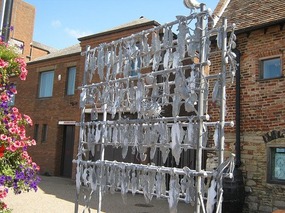
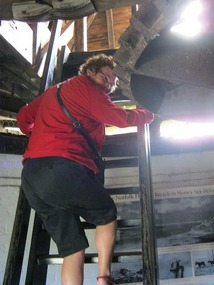
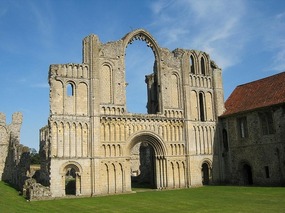

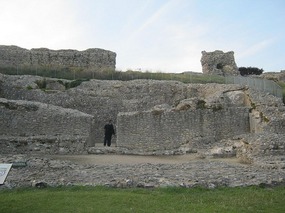
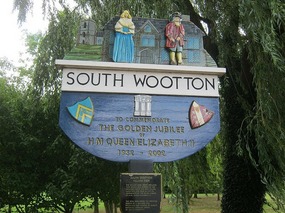
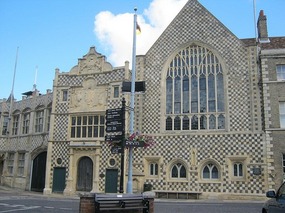



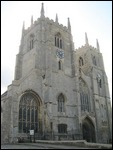
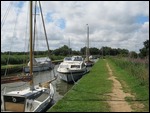
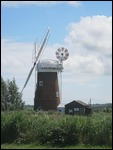
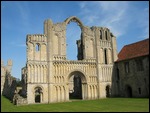
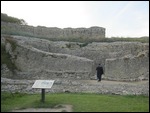
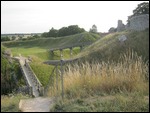
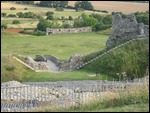
2025-05-22